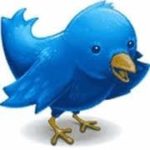Twitter Cheat Sheet: Microblog Quick Guide for Marketing
 [A Healthcare Success Educational Series] Social media platforms have become marketing instruments for patient engagement, service line awareness, new business development and other communications objectives. Each channel has a distinct purpose and personality. This educational series provides marketing professionals, hospital executives and medical practice providers with an overview for social media planning.
[A Healthcare Success Educational Series] Social media platforms have become marketing instruments for patient engagement, service line awareness, new business development and other communications objectives. Each channel has a distinct purpose and personality. This educational series provides marketing professionals, hospital executives and medical practice providers with an overview for social media planning.
What (even how) could you possibly communicate with hundreds of people with a text message of only 140 characters or less?
Way back in 2006, most of us would have blown-off the concept as a meaningless waste of bits and bytes. But Twitter—now the second most popular social media platform by eBizMBA rank—would have proved us mighty wrong. And when Twitter went public seven years later (November, 2013), it had a valuation of over $30 billion, and about 250 million unique monthly visitors.
Introduction
As we wrote previously in this series, there is no universal digital tool. You might be surprised to know that there are several dozen microblog services—although most people would be hard pressed to name more than one or two.
The immense popularity of social media in general has earned it a vital place in most contemporary healthcare marketing plans. By 2011, “Social media were accessible from virtually anywhere and had become an integral part of our daily lives with more than 550 million people on Facebook, 65 million tweets sent through Twitter each day, and 2 billion video views every day on YouTube," according to the University of North Carolina’s Brief History of Social Media.
But the limited space allowance of microblogging, plus the rapid pace of the passing text stream, means that Twitter is rarely a stand-alone tactic. Generally, it is most effective in concert with other online and traditional communications tools.
Twitter’s Mission Statement
“Twitter represents a service shaped by the people, for the people. The mission we serve as Twitter, Inc. is to give everyone the power to create and share ideas and information instantly without barriers. Our business and revenue will always follow that mission in ways that improve–and do not detract from–a free and global conversation.” [Twitter IPO filing]
Twitter Particulars
Among the most widely used platforms, Twitter is second only to Facebook. (The constant growth and change in these services produces dynamic numbers.) Twitter’s strength includes immediacy, simplicity, and a large audience. Twitter users most often post personal, work or life-related updates, send direct messages and share photos, videos or re-tweet messages.
- The brief and fast nature of Tweets plays well with younger demographic groups and seems well suited for quick, real-time and engaging conversations.
- Although messages are limited to 140 characters, the connections of following/followers is vast, virtually unlimited. (Provided you can attract and retain a large following.)
- Over 20 million adults in the US access Twitter at least once a month.
- Some 15% of online adults use Twitter and 8% do so on a typical day. [Pew, Feb 2012]
- The inclusion of hashtags [#] provides a topical indexing and retrieval system.
- Twitter tends to have its strongest appeal among the 18-29 year old age group.
- Statistically, a typical user is female, Hispanic, 20-something and urban.
- The 55-64 year old age group, however, is the fastest growing demographic segment, up 79% since 2012.
- Twitter is well suited for Smartphones and mobile devices; now mainstream with social media users. About 75% of active users are on mobile.
- One in five smartphone owners (20%) are Twitter users, with 13% using the service on a typical day.
- Twitter’s Vine feature easily integrates brief (6 second) video snippets in the sharing exchange.
Snapshot
Twitter’s place in a marketing plan will, for most applications, be a fast and furious, real-time connection with mobile device users in the younger age categories. Since messages are brief, the content must be interesting, often news-driven, and quickly engaging…usually linked to a blog, website or longer digital format for more information.
What would you add to this outline? How are you using Twitter in your marketing plan? Let us in on any unusual or unique uses of microblogging in social media.
And in related reading:
Facebook Cheat Sheet: A Guide for Healthcare and Marketing Professionals
Watch. Feel. Share. How Emotion-Fueled Videos Propel (Viral) Engagement
4 Reasons to Rethink Google Plus: Not a Social Failure After All
How to Post Video to Facebook and Five Reasons Why You Should









